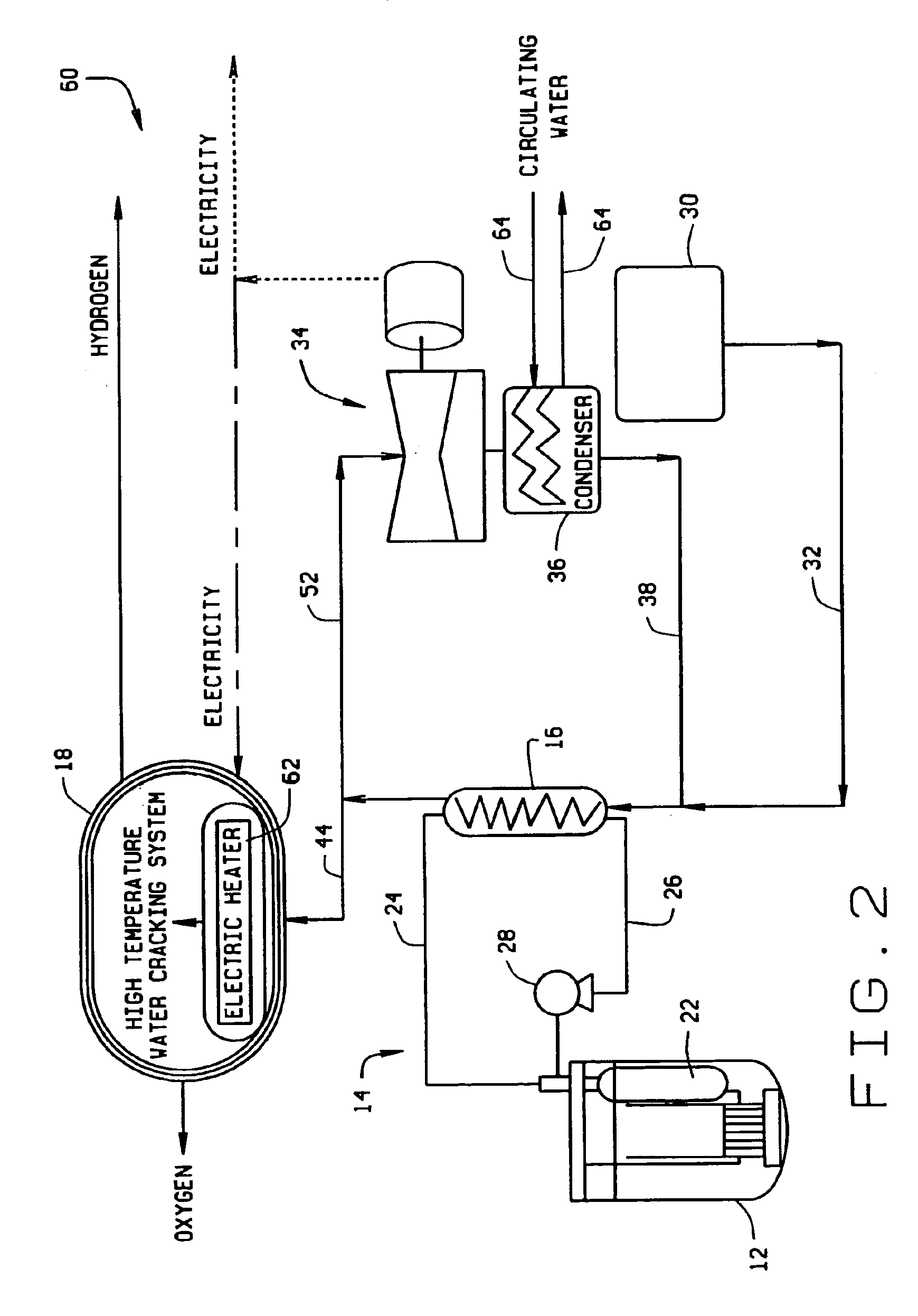Systems and methods of producing hydrogen using a nuclear reactor
a nuclear reactor and hydrogen technology, applied in nuclear reactors separation processes, etc., can solve the problems of nuclear reactors not operating at the high temperature needed for greenhouse gas reduction, and greenhouse emissions, and achieve efficient operation of water cracking systems. , the effect of low cos
- Summary
- Abstract
- Description
- Claims
- Application Information
AI Technical Summary
Benefits of technology
Problems solved by technology
Method used
Image
Examples
Embodiment Construction
FIG. 1 is a schematic illustration of a system 10 for producing hydrogen in accordance with an embodiment of the present invention. System 10 includes a liquid metal nuclear reactor 12 that includes a non-radioactive secondary loop 14 for extracting heat from reactor 12, a steam generator 16 connected to secondary heat loop 14, a high temperature water cracking system 18, and a topping heater 20.
Reactor 12 can be any known liquid metal nuclear reactor such as the reactors described in U.S. Pat. Nos. 4,508,677 and 5,158,471. Secondary loop 14 is coupled to an intermediate heat exchanger 22 in reactor 12. Secondary loop 14 includes a hot leg 24 and a cold leg 26. Secondary loop 14 includes a heat transfer medium such as helium or a liquid metal, for example, sodium, to transfer heat from intermediate heat exchanger 22 to a steam generator 16. The heat transfer medium, heated in intermediate heat exchanger 22, flows through hot leg 24 to steam generator 16, where the heat is used to ge...
PUM
| Property | Measurement | Unit |
|---|---|---|
| temperature | aaaaa | aaaaa |
| temperature | aaaaa | aaaaa |
| temperatures | aaaaa | aaaaa |
Abstract
Description
Claims
Application Information
 Login to View More
Login to View More - R&D
- Intellectual Property
- Life Sciences
- Materials
- Tech Scout
- Unparalleled Data Quality
- Higher Quality Content
- 60% Fewer Hallucinations
Browse by: Latest US Patents, China's latest patents, Technical Efficacy Thesaurus, Application Domain, Technology Topic, Popular Technical Reports.
© 2025 PatSnap. All rights reserved.Legal|Privacy policy|Modern Slavery Act Transparency Statement|Sitemap|About US| Contact US: help@patsnap.com



